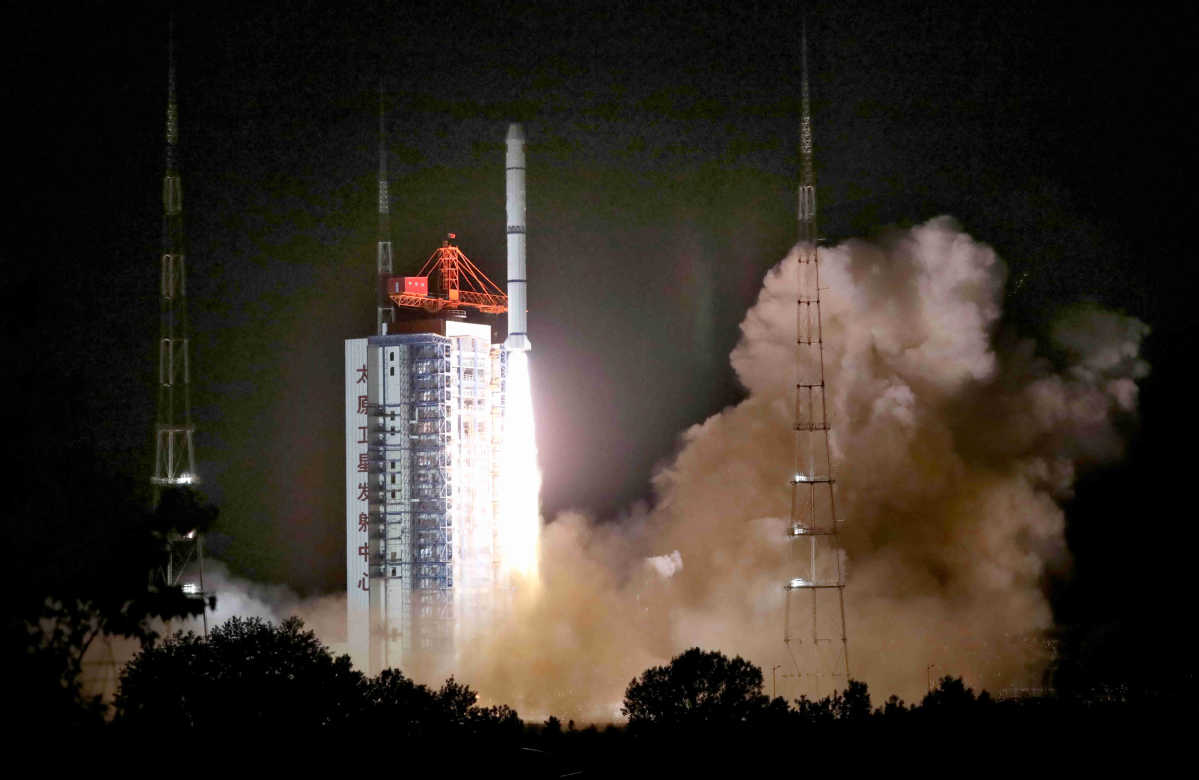
China launched a marine observation satellite on Thursday to improve its oceanographic research capability, according to a statement from the China National Space Administration and the Ministry of Natural Resources.
The HY-1D satellite blasted off atop a Long March 2C carrier rocket at 2:31 am from the Taiyuan Satellite Launch Center in Shanxi province and was later placed in a sun-synchronous orbit, the statement said, adding that the launch marked the 334th flight of China's Long March rocket fleet.
It will work with its predecessor-HY-1C, which was launched in September 2018-to set up a small network for scientific marine observation that will boost research on global climate change, it noted.
Designed and built by China Spacesat, a satellite developer under the China Academy of Space Technology in Beijing, HY-1D's major structure is based on the CAST2000 platform. The satellite carries five pieces of scientific equipment, including an ocean color scanner, an ultraviolet imager and an automatic identification system. It is expected to operate in orbit for five years.
Like the HY-1C, the new satellite can detect chlorophyll, suspended sediment concentrations and dissolved organic matter, which can affect ocean color, as well as temperatures on the sea surface.
Such data are helpful in surveying fishery and aquaculture resources and environments, offering a scientific basis for reasonable exploitation and utilization of marine resources, experts explained.
The two satellites carry imagers to probe suspended sediment in estuaries and harbors in coastal zones, and to forecast and monitor marine environmental disasters. The automatic identification and monitoring systems mounted on them are used for ship traffic, and provide data for disaster prevention and mitigation, as well as fishery production, designers said.
The two-satellite network is expected to improve China's ability to monitor, evaluate and forecast maritime risks such as storm surges, red tides, sea ice and huge waves, and help save lives and property.
The service of HY-1C and HY-1D will also enable scientists to better study global environmental changes, the role of the oceans in the global carbon cycle and the El Nino phenomenon, according to designers.
China has paid great attention to the research and investigation of marine resources for a long time and started discussing the construction of marine research satellites in the 1980s, according to the China Academy of Space Technology.
The country launched its first marine observation satellite, HY-1A, in May 2002, laying the foundation for an oceanographic monitoring system. The second in the series, HY-1B, was launched in April 2007.









